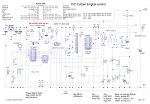PhilHornby
Senior Member
Oh ok, you confused me by saying:This is the actual one I bought
http://www.ebay.co.uk/itm/111869733216?_trksid=p2057872.m2749.l2649&ssPageName=STRK:MEBIDX:IT
I am using this module which has a backup battery on board..
http://www.ebay.co.uk/itm/DS3231-RTC-AT24C32-I2C-Precision-Real-Time-Clock-Memory-Module-Arduino-UK-FAST-/400857145439?hash=item5d54f2a05f:g:nuMAAOSwECZUqo8y

